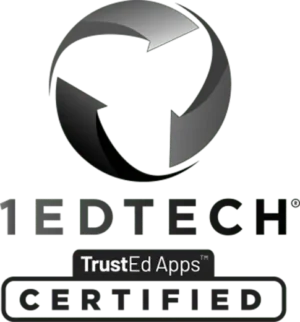

A Data Scientist’s guide for using quantitative and qualitative student data together to maximize academic performance.
What do we know about the benefits of Family communication methods? For example, does increasing frequency in weekly calls decrease disciplinary issues? Do we get a positive response from students when we text Families pictures from their classroom? What kinds of conversations with Families build trust?
Never has the relationship between school and home been more thoroughly tested than during the COVID pandemic. While educators sent essential, time-sensitive information out to Families, it was just as important for school leaders to hear updates from Families. Illness, internet access, scheduling availability, and more became the shared responsibility of Families and educators.
Now that the chaos of lockdown is largely over, K12 leadership is looking at the benefits of strengthened Family relationships and investigating how to make the most of those lines of communication. Doing so requires analysis of communication data–and that part can be tricky.
Data Analytics + Communication Tools
“I think that a lot of times when people think of data, they immediately feel overwhelmed and intimidated.” Data Scientist Dr. Joy Smithson is familiar with all the ways educators approach student data, what questions they are looking to answer, and what problems typically get in the way. “I hate it when people are intimidated by it because it just doesn’t have to be that way.”
Dr. Smithson works for SchoolStatus; a student data analytics slash Family communication solution–a combination that’s unique in K12 edtech. SchoolStatus unifies recorded Family communications (calls, texts, email, video) and traditional, quantitative forms of student data (benchmarks, assessment, attendance, behavior, etc), allowing educators to see where Family involvement is needed. Administrators are able to analyze important correlations such as where one-on-one communication has helped improve performance, behavior, attendance, etc.
Smithson and her data team help leaders find answers to questions they were never able to ask before–such as the number of times Families of at-risk students have been contacted and what was said. “There’s no precedent for Family communication analysis in ed-tech,” says Smithson. “This work is new and so necessary.”
So what types of questions can leaders ask about their communication data? Smithson has some ideas based on her work with individual districts, “If you want to impact attendance or discipline, create campaigns that target families to address that and improve those outcomes.”
Create a Communication Campaign
Set Goals and Identify Students
Smithson recommends defining your goals first. Do you want to improve attendance or behavior issues? Do you want to increase engagement with at-risk students? Your district is likely to have unique challenges based on your community or history. For example, you might want to increase involvement with your non-English speaking population (more effective if your chosen communications platform can automatically translate messages into a Family’s preferred home language). Decide what your goals are, and then identify the students who fall into that category.
Review Communication History
Review the interaction that has already occurred with those students’ caretakers. You might ask how frequently or recently Families have been contacted. What was said? Is there evidence of a positive or negative relationship with the school? Getting an idea of how Families have been contacted previously will help you move forward.
For example, Smithson points out that communication frequency does not necessarily equal a positive relationship with the school, “We know that volume in and of itself, doesn’t mean that we’re developing a relationship.” Sometimes an uptick in communication frequency coincides with unpleasant behavior conversations or simply non-personal information sharing.
“We focus on quality over quantity,” Smithson explains. “If I’m just messaging you ‘Picture day tomorrow!’, or ‘Don’t forget to turn in your homework!’, that’s helpful and it’s informative–the Family needs to know. But it is very different than saying, ‘Hey, I noticed that Joy wasn’t herself today and she’s been late to school a couple of times, is everything okay? Is there anything I can do to help?’”
Communication that builds trust and encourages Family involvement and engagement is two-way. It must be respectful of Families and allow for input. Investigate how much of your Family communication is informational or if it is personal and affirming.
Plan Frequency and Messaging
Administrators may want to provide sample scripts or prompts to teachers along with the list of Families to contact. The key is to be intentional and responsive with communication and to measure its effectiveness. You might set a number of weeks for your behavior campaign and, during that time, teachers share methods for improving behavior with Families and more importantly, listen to what they have to say.
Review Results
The results of your communication campaign may surprise you. In 2016, after about a year of using combined data and communication tools in SchoolStatus, Pascagoula School District administrator Stoney Rogers reported the number of phone calls to Families had increased dramatically, recording calls had increased the professionalism of the staff, and that Families had become more open to contacting the school. It seemed that the overall mood of communication changed for the better. “It is easy to use,” says Pascagoula teacher Susan Carriker, “it keeps your number private, records/tracks your contact, and provides valuable data on student achievement.”
Inbound is Where it’s At
One last tip Dr. Smithson recommends is keeping an eye on school inbound communication numbers–that is the frequency and purpose of Families replying to teachers via call, email, or text. “Really getting that inbound engagement lets you know that families are reciprocating that communication, there’s a dialogue happening, which is just so much more important than I’m blasting you with another message,” she says. “There’s a relationship being developed, or being maintained.”
__________
To learn more about communication in SchoolStatus, visit https://www.schoolstatus.com/features/Family-communication
Thanks for reading! Here are more resources to support students and educators
Stay Connected
News, articles, and tips for meeting your district’s goals—delivered to your inbox.





























